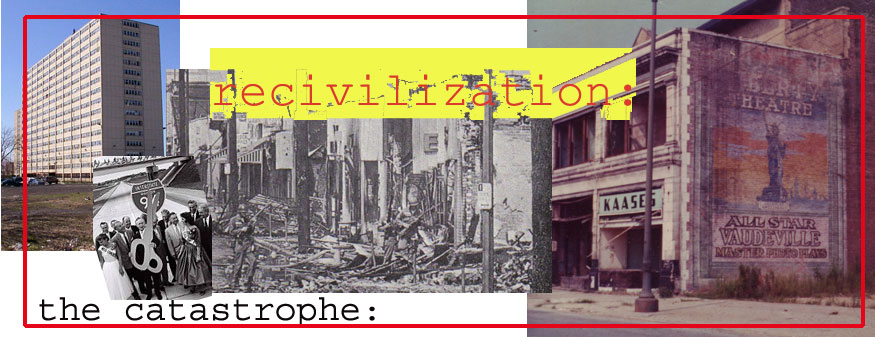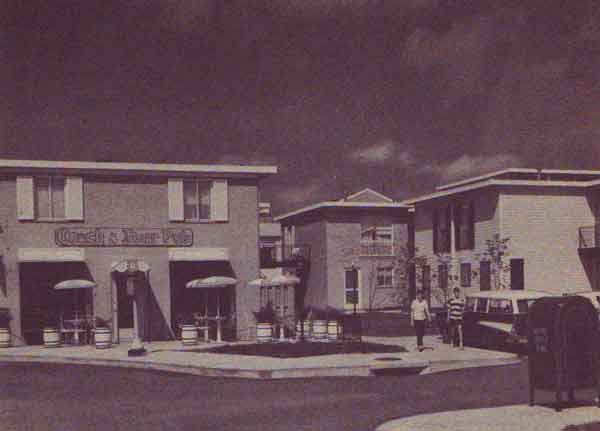

334 laclede town
It isn't widely known, but the U.S. Department of Housing and Urban Development did once nearly build a successful project. Laclede Town, west of downtown St. Louis, was a one-off experiment of the 60's, an attempt to create from scratch an integrated, mixed-income small neighborhood. Residents were hand-picked, with some of the units reserved as housing for nearby St. Louis University. HUD arranged a novel mix of public and private investment, and an exceptional architect, Chloethiel Woodard Smith, gave it a plan radically different from anything the government had ever built before. Laclede Town was a traditional neighborhood: a few square blocks of streets lined with St. Louis-style row houses, only a little more bright and colorful. It had a cafe in it, with outside tables, and buildings with small shops facing the street and apartments above. It was the New Urbanism, thirty years ahead of its time. Everybody loved it; from all accounts Laclede Town's diverse population thought it was the nicest place they'd ever seen. A story involving HUD, however, could not end there. Like all its projects, this one had been shabbily built, and as repair bills mounted the private investors who were responsible eventually stopped putting money in; the way their tax depreciation worked, it was the most profitable solution. HUD cut back its funding too, and gave priority on the waiting list to the very lowest income people, many of them refugees from the nearby Pruitt-Igoe project after its demolition in 1972. These were welcomed by Laclede Town's owners, who would be assured of government-paid high rents and little hassle from inspectors while they watched their buildings fall apart, waiting for a federal bailout that never came. All the original residents moved out, and within a few years Laclede Town ended up an abandoned ruin, just like Pruitt-Igoe. |
|

|